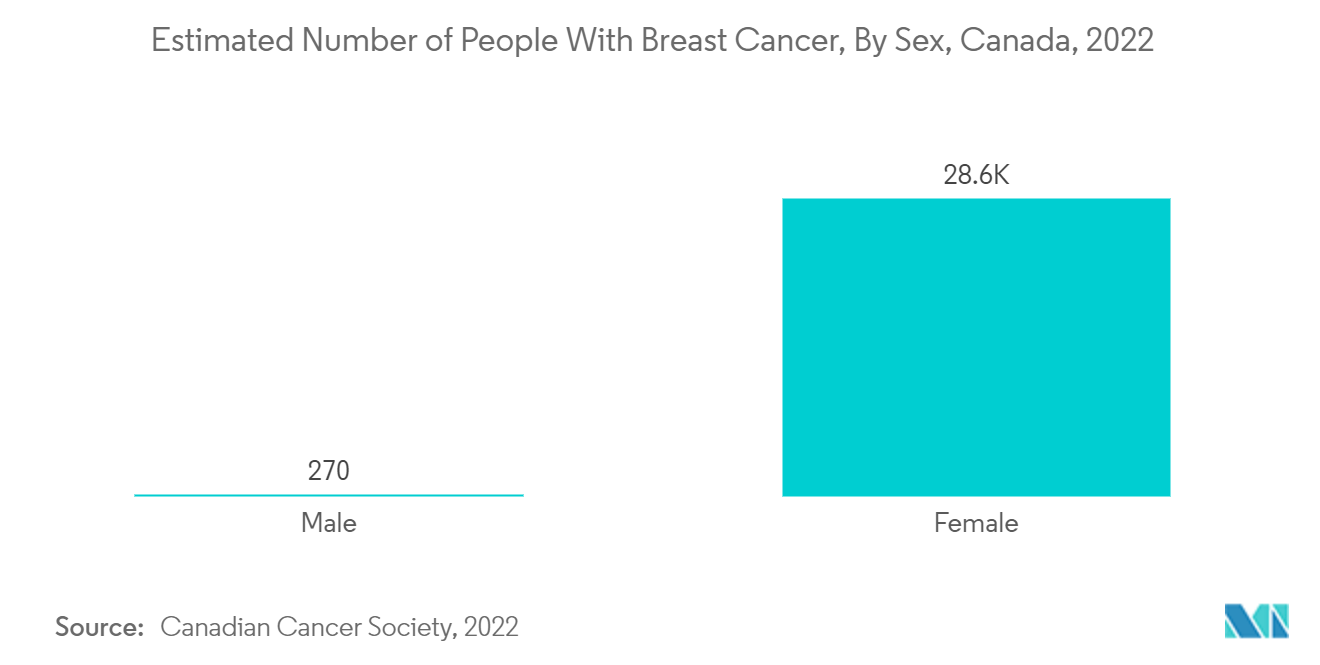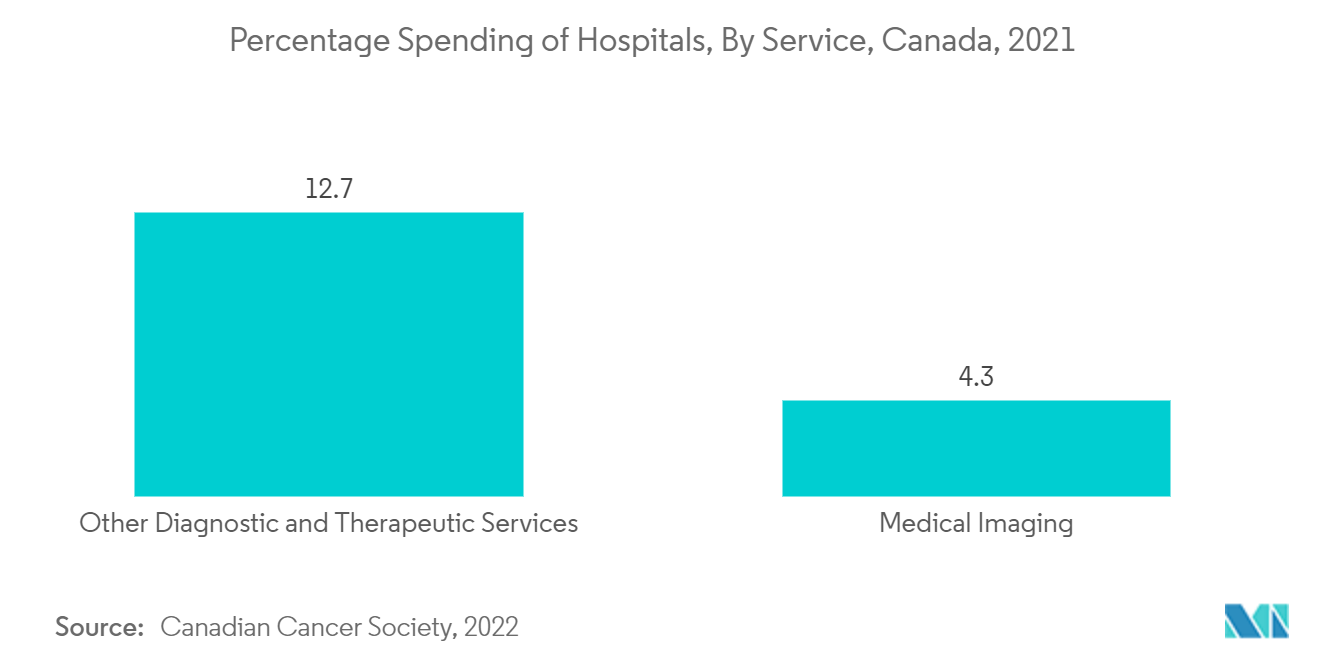Market Trends of Canada Mammography Industry
Digital System are Expected to Witness Significant Growth Over the Forecast Period
In digital mammography, the X-ray film is replaced by solid-state detectors, which convert X-rays into electrical signals that produce images of breasts. Digital mammogram images are stored on a computer and can be easily shared electronically, allowing multiple providers to share necessary data to improve care.
The rising benefits of digital mammography are anticipated to drive the segment growth. Digital mammography uses less radiation, has better picture clarity, and can alter the photos afterwards. This can make detecting abnormal changes more accurate due to the detail provided.
The growing initiatives by the governments for screening breast cancer and adopting digital screening systems are improving the country's segment growth. The Ontario Breast Screening Program is focused on providing mammography tests every two years. Women between the ages of 50 and 74 are eligible for the Ontario Breast Screening Program, though they have no new symptoms of breast cancer or do not have a personal history of breast cancer. Merivale Medical Imaging provides digital mammography technology and is affiliated with the Ontario Breast Screening Program.
The rising initiatives from the key market players, such as the launch of mammography devices in the Canadian market, are anticipated to drive the segment growth. For instance, in October 2021, FUJIFILM Canada Inc. received a Health Canada medical device license for its ASPIRE Cristalle digital mammography solution. The company also announced an expansion of its partnership with Christie Innomed to offer the product across every province in Canada.
The growing breast cancer incidences and the rising strategies from the market players are increasing the digital systems as they are more prominent, owing to the advantages, boosting the segment's growth in the country.

Hospital Segment is Expected to Show Significant Share over the Forecast Period.
In Canada, hospital diagnostics offers all mammography services. Hospitals may use screening mammography more frequently than other settings. Many breast cancer patients, including older women, minority women, and low-income women with limited education, are commonly served by public hospitals, thereby driving the segment growth.
The factors driving the segment growth include the rising adoption of mammograms in hospitals, rising hospital infrastructure, and increasing demand for breast cancer screening in hospitals.
The rising demand for breast cancer screening in hospitals is anticipated to drive the segment growth. For instance, in May 2023, Sensenbrenner Hospital in Kapuskasing, Ontario, hosted a walk-in mammogram event. In this event, the residents from Kapuskasing and neighboring areas such as Val Rita-Harty, Fauquier-Strickland, and Smooth Rock Falls can attend without an appointment or a referral. Such initiatives by the hospitals are anticipated to drive segment growth due to increased screening for breast cancers.
Furthermore, the rising adoption of mammograms in hospitals in Canada is anticipated to propel the segment growth further. For instance, in May 2023, Centura St. Elizabeth Hospital in Canada purchased a 3D mammogram machine for physicians to utilize reliable mammogram testing as part of a patient's quality healthcare plan. Therefore, the adoption of advanced mammograms for effective diagnosis helps increase breast cancer diagnosis in the region, driving segment growth.
Therefore, the rising adoption of breast cancer initiatives by hospitals and the rising adoption of mammograms in hospitals is anticipated to drive the segment growth.


